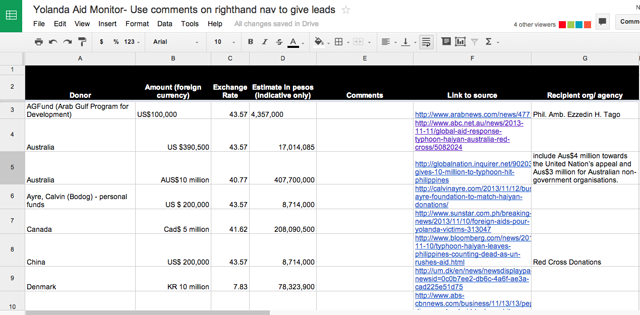It’s More Fun (With More Jobs and Income) in the Philippines
PTV recently launched gov@Work, a TV show that allows ordinary Filipinos to talk to the Cabinet Secretaries by Google Hangouts online chat. Through this medium , the public can learn more about government projects and how they may benefit from it, and more importantly be able to air their concerns with the heads of government agencies.
For their second episode, Tourism Secretary Ramon Jimenez had a Google Hangouts conversation with: Ryan Guinto, IT Specialist in California, USA; Charlie Labajo, licensed tour guide in Coron, Palawan; Phoebe Torres, Tourism student; and Patnubay Tiamson, Angono Tourism Officer. He was also interviewed by bloggers Nina Fuentes and Bogart the Explorer from Davao City.
“Tourism is not about the number of foreigners visiting our country, but rather the jobs and businesses we create for the Filipino people.” This was the guiding principle and vision shared by President Benigno S. Aquino III to Ramon R. Jimenez, Jr upon his appointment as Department of Tourism Secretary. Since then, the Secretary has taken to heart that the be-all and end-all of tourism is the welfare of the Filipino people.
This is also the inspiration behind the highly acclaimed It’s more fun in the Philippines slogan. “Filipinos have to believe they are more fun as a people. We might not be the most glamorous, or most modern country but everyone agrees it’s more fun to be around Filipinos,” the Secretary said, passionately.
Beyond the success of the slogan, the Tourism Secretary is aware of the importance of capitalizing on the spotlight now shining on the Philippines. “Tourism is a key driver of social and economic progress. Any tourist spending here signifies resources that were not here yesterday.” Sec. Jimenez cites the example of existing jobs referred to as boatman guide or butanding explainer. “Theoretically, we can invent 7,107 jobs and multiply that to the experiences possible in each island.”
The Department of Tourism boasts too of having surpassed their original target of 35 million tourists by 2016. In 2011 alone, 37 million foreign tourists traveled the country while last year’s figure reached 42 million. Sec. Jimenez estimates total tourism revenues have already exceeded P1 Trillion. That is how tourism is contributing to the greater agenda of Inclusive Growth. “How can Metro Manila share its wealth to the rest of the country? The answer is tourism,” remarked Sec. Jimenez.
Ongoing Projects
Secretary Jimenez assured the Filipino people that the country can absorb the increasing influx of tourists. 12,000 hotel rooms are set for construction next year. Airport expansions are ongoing, including plans of making 12 airports capable of handling international flights. Sec. Jimenez shared that the National Tourism Development Plan envisions the construction of infrastructure systems such as airports and highways in areas where there are at least seven tourist destinations relatively adjacent to each other. “In Palawan,” Jimenez explained, “tourists don’t just go to the Underwater Caves, they also try zip lines, deer watching expedition, scuba diving and other travel experiences.”
“But the most important point here is that there are jobs waiting to be generated in each local tourist destination.” The DOT had just received $7M for training of local guides and other tourism related jobs. The agency is also finalizing details for the awarding and recognition of local citizens in promoting tourist destinations. Sec. Jimenez stressed that tourism starts and originates in the local level.
Moving Force Behind Tourism Campaign
When Sec. Jimenez was asked to compare his career in advertising and his job as DOT secretary, he replied, “There is no difference between promoting a brand and the country, except that for my current job, I cannot fail. I must succeed.” Secretary Mon Jimenez shared his insight behind his most successful project yet, the “More Fun in the Philippines” slogan. “It was all about the participation of Filipinos, especially the youth.” For him, the campaign proved Filipinos need not wait for DOT or other government agencies in promoting the beauty of the country. For this purpose, social media has been a most useful and effective medium. “Social Media is about people checking with each other whether something is for real. Now, the success of the Philippines has been checked, double checked and triple checked. And it’s true: it is more fun in the Philippines. Now that propagates the story even more.”
“Tourism is love of country expressed as a warm welcome. So please, do two things,” the secretary encouraged all Filipinos, “talk about the Philippines and the second is, talk about it some more.”



